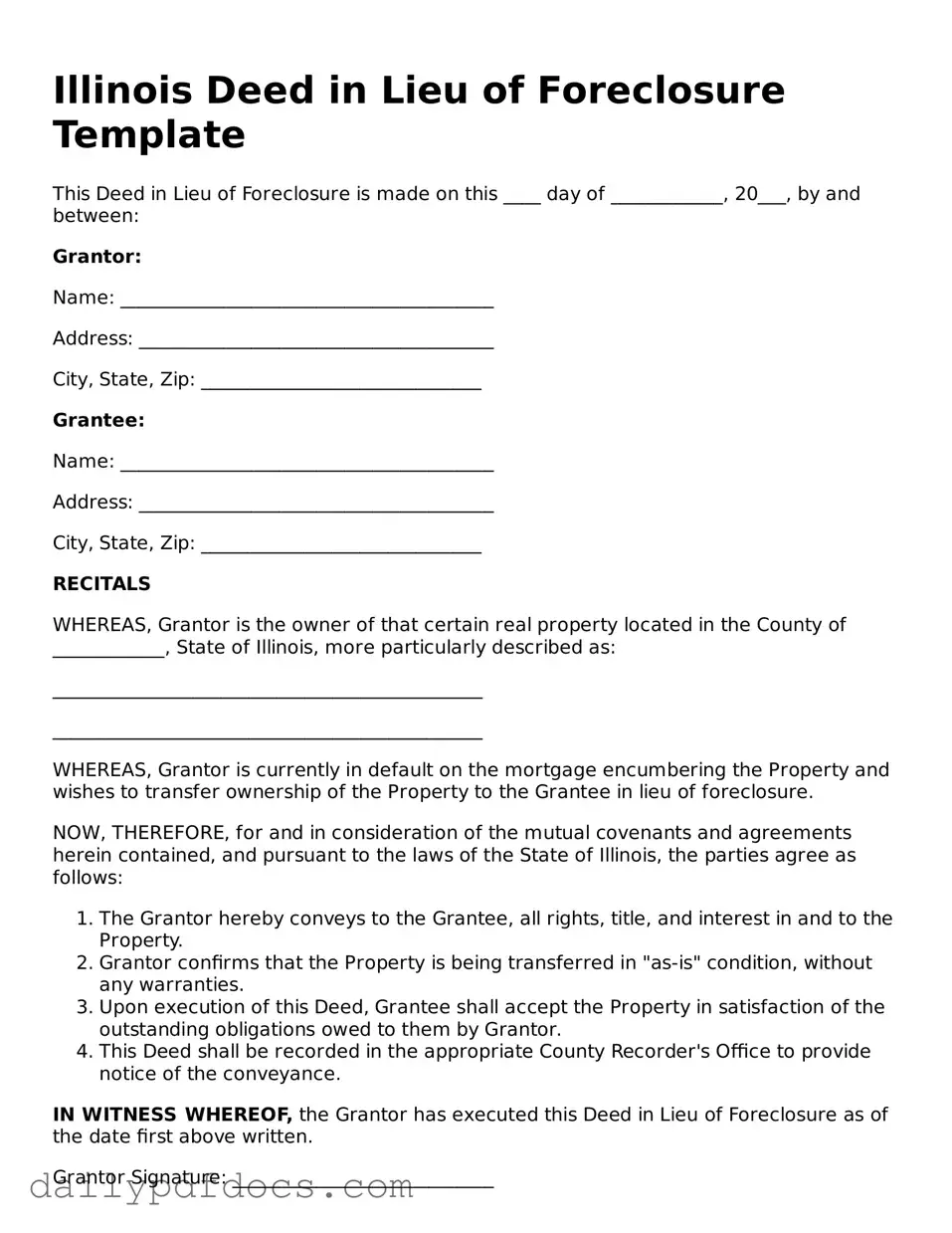Illinois Deed in Lieu of Foreclosure Template
This Deed in Lieu of Foreclosure is made on this ____ day of ____________, 20___, by and between:
Grantor:
Name: ________________________________________
Address: ______________________________________
City, State, Zip: ______________________________
Grantee:
Name: ________________________________________
Address: ______________________________________
City, State, Zip: ______________________________
RECITALS
WHEREAS, Grantor is the owner of that certain real property located in the County of ____________, State of Illinois, more particularly described as:
______________________________________________
______________________________________________
WHEREAS, Grantor is currently in default on the mortgage encumbering the Property and wishes to transfer ownership of the Property to the Grantee in lieu of foreclosure.
NOW, THEREFORE, for and in consideration of the mutual covenants and agreements herein contained, and pursuant to the laws of the State of Illinois, the parties agree as follows:
- The Grantor hereby conveys to the Grantee, all rights, title, and interest in and to the Property.
- Grantor confirms that the Property is being transferred in "as-is" condition, without any warranties.
- Upon execution of this Deed, Grantee shall accept the Property in satisfaction of the outstanding obligations owed to them by Grantor.
- This Deed shall be recorded in the appropriate County Recorder's Office to provide notice of the conveyance.
IN WITNESS WHEREOF, the Grantor has executed this Deed in Lieu of Foreclosure as of the date first above written.
Grantor Signature: ____________________________
Grantor Printed Name: ________________________
State of Illinois, County of ____________
Subscribed and sworn to before me on this ____ day of ____________, 20___.
Notary Public Signature: ______________________
Notary Public Printed Name: _________________
My Commission Expires: ______________________
Note: This template is for illustrative purposes only and does not constitute legal advice. It is important to consult with a qualified attorney to ensure compliance with local laws and regulations.
